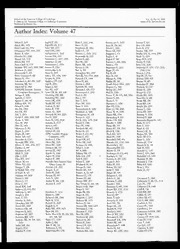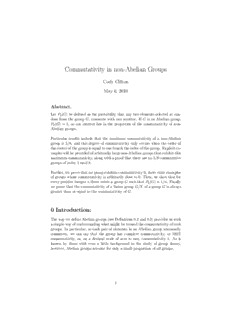
Commutativity in non-Abelian Groups PDF
Preview Commutativity in non-Abelian Groups
Commutativity in non-Abelian Groups Cody Clifton May 6, 2010 Abstract. Let P (G) be defined as the probability that any two elements selected at ran- 2 dom from the group G, commute with one another. If G is an Abelian group, P (G) = 1, so our interest lies in the properties of the commutativity of non- 2 Abelian groups. Particular results include that the maximum commutativity of a non-Abelian group is 5/8, and this degree of commutativity only occurs when the order of thecenterofthegroupisequaltoonefourththeorderofthegroup. Explicitex- ampleswillbeprovidedofarbitrarilylargenon-Abeliangroupsthatexhibitthis maximumcommutativity,alongwithaproofthatthereareno5/8commutative groups of order 4mod8. Further,weprovethatnogroupexhibitscommutativity0,thereexistexamples ofgroupswhosecommutativityisarbitrarilycloseto0. Then, weshowthatfor every positive integer n there exists a group G such that P (G)=1/n. Finally 2 we prove that the commutativity of a factor group G/N of a group G is always greater than or equal to the commutativity of G. 0 Introduction: ThewaywedefineAbeliangroups(seeDefinitions0.2and0.3)providesuswith asimplewayofunderstandingwhatmightbetermedthecommutativityofsuch groups. In particular, as each pair of elements in an Abelian group necessarily commutes, we can say that the group has complete commutativity, or 100% commutativity, or, on a decimal scale of zero to one, commutativity 1. As is known by those with even a little background in the study of group theory, however, Abelian groups account for only a small proportion of all groups. 1 Given that these other, so-called non-Abelian groups, represent the vast major- ity of all groups, we would like to develop a method for classifying the degree, or the percent, to which a given non-Abelian group is commutative. As we will see directly from the following definitions, even non-Abelian groups cannot havecommutativity0onthezerotoonescale,sinceatleastonegroupelement, namely the identity (see Definition 0.2), will always commute with every other element. Also, as a non-Abelian group is, by definition, not Abelian, it must contain some elements that do not commute, so we cannot have a non-Abelian group with commutativity 1. Since, at a glance, we already can rule out 0 and 1 as possible values for the commutativity of a given non-Abelian group, our initial investigations will con- sist primarily of showing what values, between 0 and 1, are possible degrees of non-Abelian commutativity. In addition, we will spend much of our time describing the ways in which many the characteristics of commutativity are ex- hibited by finite non-Abelian groups, such as the dihedral groups. Finally, we will conclude by demonstrating additional properties of the commutativity of non-Abelian groups, such as the relationship between the commutativity of a group, and the commutativity of one of its factor groups. To begin our investigation of the commutativity of non-Abelian groups we will first provide a few definitions. Unless otherwise specified, all notation and ter- minology used will be as in [1]. Definition 0.1: Binary Operation. LetGbeaset. Abinary operation onGisafunctionthatassignseachordered pair of elements of G an element of G. Fromthedefinitionofabinaryoperation,wenextdevelopthenotionofagroup. Definition 0.2: Group LetGbeanonemptysettogetherwithabinaryoperation(usuallycalledmulti- plication)thatassignstoeachorderedpair(a,b)ofelementsofGanelementof Gdenotedbyab. WesaythatGisagroup underthisoperationifthefollowing three properties are satisfied. 1. Associativity. The operation is associative; that is, (ab)c=a(bc) for all a, b, c in G. 2. Identity. There is an element e (called the identity) in G such that ae=ea=a for all a in G. 3. Inverses. For each element a in G, there is an element b in G (called the inverse of a) such that ab=ba=e. Now, to characterize the difference between Abelian and non-Abelian groups, we provide the following definition. 2 Definition 0.3: Abelian Group If a group has the property that ab=ba for every pair of elements a and b, we say that the group is Abelian. A group is non-Abelian if there is some pair of elements a and b for which ab(cid:54)=ba. Finally, the next two definitions require particular attention, as they will be directly referred to numerous times throughout this article. Definition 0.4: Center of a Group The center, Z(G), of a group G is the subset of elements in G that commute with every element of G. In symbols, Z(G)={a∈G | ax=xa for all x in G}. Definition 0.5: Centralizer of a in G LetabeafixedelementofagroupG. Thecentralizer of a in G,C(a),istheset ofallelementsinGthatcommutewitha. Insymbols,C(a)={g ∈G|ga=ag}. In addition to the five definitions above, we will later refer to both the Class Equation and Lagrange’s Theorem, both of which will be stated and explained prior to their usage. 1 Commutativity Using the definition of the center of a group and of the centralizer of a group element, we are prepared to begin developing a measure for the commutativity of a given group. First, though, we define a certain family of groups. Dihedral groups The following definition describes the family of groups that will play the most important role in providing examples of the properties of non-Abelian commu- tativity throughout the remainder of this article. Definition 1.1: Dihedral group 1 ThedihedralgroupD isthesymmetrygroupofann-sidedregularpolygonfor n n>1. The group order of D is 2n. n 1See [4] for definition. A thorough explanation of the properties and construction of the dihedralgroupscanbefoundin[1]. 3 Byorder wemeanthenumberofelementsofagroup(finiteorinfinite). Wewill use|G|todenotetheorderofagroupG. Now,tofurtherexplainthisdefinition, we will consider as an example the dihedral group, D , of order eight.2 4 Fromthedefinition,weknowthatthedihedralgroupD isthesymmetrygroup 4 ofa4-sidedregularpolygon,thatis,asquare. Toelaborate,thismeansthatthe group D consists of the eight flips and rotations which comprise the natural 4 transformations that can be performed on a square. The four rotations in the plane are by degrees of 0, 90, 180, and 270. These are denoted R , R , R , 0 90 180 and R respectively. The four remaining elements are two flips, H and V, 270 across the horizontal and vertical axes, and two flips, D and D(cid:48), across the two diagonal axes. These eight transformation elements are shown in Figure 1. Figure 1: D ={R ,R ,R ,R ,H,V,D,D(cid:48)} 4 0 90 180 270 Nowthatwehavegainedaknowledgeoftheelementsthatcomprisethedihedral groupD webegintoconsiderproductsoftheseelementsindifferentorders, so 4 as to determine how many pairs of elements commute out of the total number of possible commutative pairs. 2ThereadershouldnotethatthepropertiesofthisparticulargroupD4 willbeinvaluable in later sections of this article, as they exhibit many of the properties of commutativity of non-Abeliangroupsthatwillbediscussedandproved. 4 The easiest way to summarize the result of taking the product of each pair of elements in the group is to construct a Cayley table for D [see Table 1]. 4 A Cayley table for group elements can be thought of in the same way as a multiplication table for integers. That is, to determine the value of the product ij, one may refer to the value in the intersection of the ith row and the jth column. D R R R R H V D D(cid:48) 4 0 90 180 270 R R R R R H V D D(cid:48) 0 0 90 180 270 R R R R R D(cid:48) D H V 90 90 180 270 0 R R R R R V H D(cid:48) D 180 180 270 0 90 R R R R R D D(cid:48) V H 270 270 0 90 180 H H D V D(cid:48) R R R R 0 180 90 270 V V D(cid:48) H D R R R R 180 0 270 90 D D V D(cid:48) H R R R R 270 90 0 180 D(cid:48) D(cid:48) H D V R R R R 90 270 180 0 Table 1: Cayley table for the group D 4 Asanexample, noticethatHR =D. Further, todemonstratethatthegroup 90 D isnon-Abelian,wemaynotethatR H =D(cid:48). Itwillbelefttothereaderto 4 90 verifythattheelementsD andD(cid:48) doindeedrepresenttheresultoftheproduct of the elements H and R in the orders shown above. 90 A measure of commutativity Now that we have one family of non-Abelian groups (the dihedral groups) to examine, wecanbegintodevelopameasureforthecommutativityofgroupsin general. There are at least two ways to approach the problem of specifying a measure of commutativity for non-Abelian groups. One uses the simple definition of the centralizer of each element of the group, while the other uses the notions of conjugates and conjugacy classes. As it turns out, both of these methods lead to the same measure of commu- tativity. We will discuss both methods, initially focusing on the perhaps more intuitiveapproachinvolvingcentralizers,andlaterdetailingthesomewhatmore elegant conjugacy class idea. 5 Henceforth, we will refer to the commutativity of a group G as P (G) (notice 2 that this notation applies even when the group G is Abelian, but that P (G) 2 trivially equals 1 if this is the case). The rationale behind this notation is that the commutativity of a group as we will be measuring it is the probability that any two group elements selected at random commute with one another, hence: P . 2 Before defining the P measure of commutativity in terms of the centralizers of 2 thegroupelements,wenotethatthecenterofagroupbyitselfdoesnotprovide aparticularlyaccuratemeasureforcommutativity. Inordertodemonstratethis fact, we introduce some of the other small dihedral groups, specifically D , D , 3 5 and D .3 6 As previously defined, the small dihedral groups D , D , and D consist of 3 5 6 elementscorrespondingtotherotation-andflip-symmetriesofregularpolygons with 3, 5, and 6 sides respectively. In particular, R represents a rotation by m m degrees, and the other variables V,H,D,F and their primes represent flips across the axes that run either from one vertex to the opposite vertex or from the midpoint of one side to the midpoint of the opposite side (in the case of the even-sidedpolygonssuchasthehexagon)orfromonevertextothemidpointof the side opposite it (in the case of the odd-sided polygons such as the triangle and the pentagon). Thus, including D as defined earlier, we have: 4 D ={R ,R ,R ,V,D,D(cid:48)}, 3 0 120 240 D ={R ,R ,R ,R ,V,H,D,D(cid:48)}, 4 0 90 180 270 D ={R ,R ,R ,R ,R ,V,D,D(cid:48),F,F(cid:48)}, 5 0 72 144 216 288 D ={R ,R ,R ,R ,R ,R ,V,V(cid:48),V(cid:48)(cid:48),D,D(cid:48),D(cid:48)(cid:48)}, 6 0 60 120 180 240 300 where, in each case, R is the identity element of the group. Now, examining 0 the Cayley table of each group,4 we can conclude that the centers of the four dihedral groups are: Z(D )={R }, 3 0 Z(D )={R ,R }, 4 0 180 Z(D )={R }, 5 0 Z(D )={R ,R }. 6 0 180 3Ingeneral,wewillnotconsiderthefirstdihedralgroupD2,asitonlyconsistsof4elements andistherebyAbelian. Infact,whereas[4]definesthedihedralgroupsasbeginningwithD2, [1]onlyconsidersthedihedralgroupsDn forn≥3. 4The reader may consult Table 1 for an example of the Cayley table of D4. The Cayley tableofeachoftheotherthreegroupscanbeeasilyconstructed. 6 By the regular structural nature of the polygons that comprise the D groups, n we can conclude that when n is even the two elements in the center of D are n R and R , whereas when n is odd, the only element in Z(D ) is R . To see 0 180 n 0 this, we make note of the following facts. Clearly R , a rotation by zero degrees, is the identity of every dihedral group 0 and is thus in the center of D for all n. Then, in all dihedral groups, every n rotation element commutes with every other rotation element, whereas every flip element does not commute with most rotation elements. Since in the case of even-sided polygon dihedral groups, every flip element commutes with the identity, R , and the element R , but not with any other rotation element, 0 180 we conclude the Z(D )={R ,R } when n is even. On the other hand, every n 0 180 flipelementinanodd-sidedpolygondihedralgroupdoesnotcommutewithany rotation element besides the identity, so Z(D )={R } when n is odd. n 0 Since the center will continue to either be of order 1 or order 2, no matter how large the group is, the sizes of the centers may rapidly become an inaccurate measure of the degree to which a dihedral group is non-Abelian. Giventhatthecentersofthedihedralgroupsdonotprovideuswithanaccurate method for measuring group commutativity,5 we proceed to compute the cen- tralizersofeveryelementofeachofthefourdihedralgroupsdetailedabove. We mayagainrefertotheCayleytableofeachofthesegroupsinordertodetermine the centralizers of their elements according to Definition 0.5. The elements of the centralizer of each element of D are listed below. 3 C(R )={R ,R ,R ,V,D,D(cid:48)}, 0 0 120 240 C(R )={R ,R ,R }, 120 0 120 240 C(R )={R ,R ,R }, 240 0 120 240 C(V)={R ,V}, 0 C(D)={R ,D}, 0 C(D(cid:48))={R ,D(cid:48)}. 0 5Itshouldbenoted,however,thatthecenterofagroupwillbeanimportantconsideration whendeterminingthemaximumcommutativityofnon-Abeliangroups. 7 The elements of the centralizer of each element of D are listed below. 4 C(R )={R ,R ,R ,R ,V,H,D,D(cid:48)}, 0 0 90 180 270 C(R )={R ,R ,R ,R }, 90 0 90 180 270 C(R )={R ,R ,R ,R ,V,H,D,D(cid:48)}, 180 0 90 180 270 C(R )={R ,R ,R ,R }, 270 0 90 180 270 C(V)={R ,R ,V,H,}, 0 180 C(H)={R ,R ,V,H,}, 0 180 C(D)={R ,R ,D,D(cid:48)}, 0 180 C(D(cid:48))={R ,R ,D,D(cid:48)}. 0 180 The elements of the centralizer of each element of D are listed below. 5 C(R )={R ,R ,R ,R ,R ,V,D,D(cid:48),F,F(cid:48)}, 0 0 72 144 216 288 C(R )={R ,R ,R ,R ,R }, 72 0 72 144 216 288 C(R )={R ,R ,R ,R ,R }, 144 0 72 144 216 288 C(R )={R ,R ,R ,R ,R }, 216 0 72 144 216 288 C(R )={R ,R ,R ,R ,R }, 288 0 72 144 216 288 C(V)={R ,V}, 0 C(D)={R ,D}, 0 C(D(cid:48))={R ,D(cid:48)}, 0 C(F)={R ,F}, 0 C(F(cid:48))={R ,F(cid:48)}. 0 The elements of the centralizer of each element of D are listed below. 6 C(R )={R ,R ,R ,R ,R ,R ,V,V(cid:48),V(cid:48)(cid:48),D,D(cid:48),D(cid:48)(cid:48)}, 0 0 60 120 180 240 300 C(R )={R ,R ,R ,R ,R ,R }, 60 0 60 120 180 240 300 C(R )={R ,R ,R ,R ,R }, 120 0 60 120 180 240 C(R )={R ,R ,R ,R ,R ,R ,V,V(cid:48),V(cid:48)(cid:48),D,D(cid:48),D(cid:48)(cid:48)}, 180 0 60 120 180 240 300 C(R )={R ,R ,R ,R ,R ,R }, 240 0 60 120 180 240 300 C(R )={R ,R ,R ,R ,R ,R }, 300 0 60 120 180 240 300 C(V)={R ,R ,V,D}, 0 180 C(V(cid:48))={R ,R ,V(cid:48),D(cid:48)}, 0 180 C(V(cid:48)(cid:48))={R ,R ,V(cid:48)(cid:48),D(cid:48)(cid:48)}, 0 180 C(D)={R ,R ,V,D}, 0 180 C(D(cid:48))={R ,R ,V(cid:48),D(cid:48)}, 0 180 C(D(cid:48)(cid:48))={R ,R ,V(cid:48)(cid:48),D(cid:48)(cid:48)}. 0 180 8 As the order of the centralizer of a certain group element gives us the number of group elements that commute with that certain element, we can rapidly determine the total number of commutative pairs of elements (including the product of an element with itself, which is clearly commutative) simply by summing the orders of the centralizers of every element in a group. By this standard, we can then also say that the total possible number of commutative pairs of elements in a given group (that is, the total number of pairs) is simply the order of the group squared. Thus,thepreviouslymentionedP (G)measureofcommutativitycanbewritten 2 as the fraction c/|G|2, where c represents the sum of the the centralizers of all of the group elements. To better understand this definition of P (G), we will compute the P (D ) for 2 2 n n=3,4,5,6. Aswehavealreadycomputedthecentralizersforeveryelementin eachofthesefourdihedralgroups,itremainstosumtheorderofeachcentralizer in a given group, and divide this value by the order of the group squared. In this way, we find that in D , the total number of pairs that commute is 3 c = 6 + 3 + 3 + 2 + 2 + 2 = 18 (the sum of the order of each of the six centralizers), while the order of the group squared is |D |2 = 62 = 36. Thus, 3 the degree to which D is commutative, is: 3 18/36=0.5 Likewise, for D , the number of commutative pairs is c = 8+4+8+4+4+ 4 4+4+4=40, the total number of pairs is |D |2 =82 =64, and the degree to 4 which it is commutative is: 40/64=0.625 ForD ,thenumberofcommutativepairsisc=10+5+5+5+5+2+2+2+2+2= 5 40, the total number of pairs is |D |2 = 102 = 100, and the degree to which it 5 is commutative is: 40/100=0.4 Finally, for D , the number of commutative pairs is c = 12+6+6+12+6+ 6 6+4+4+4+4+4+4=72, the total number of pairs is |D |2 =122 =144, 6 and the degree to which it is commutative is: 72/144=0.5 9 From these examples, we can begin to suppose that even-polygon dihedral groupsaremorecommutativethansimilarly-sizedodd-polygondihedralgroups, and that smaller dihedral groups are more commutative than larger ones. We will shortly see that both of these ideas are correct, and can be easily proven. Deriving P from conjugacy classes 2 As promised, we will now discuss a second method by which we may arrive at the commutativity measure P . Since this method uses the idea of conjugacy 2 classes, let us begin with a definition. Definition 1.2: Conjugacy Class of a. Let a and b be elements of a group G. We say that a and b are conjugate in G (and call b a conjugate of a) if xax−1 =b for some x in G. The conjugacy class of a is the set cl(a)={xax−1 | x∈G}. The reader may notice that conjugacy is an equivalence relation on a group. That is, conjugacy satisfies the reflexive, symmetric, and transitive properties, as shown below. Let G be a group and let a ∈ G. Notice that a = eae−1, where e ∈ G is the identityofthegroup. Thus, conjugacysatisfiesthereflexiveproperty. Next, let b ∈ G and that a = xbx−1 for some x ∈ G. Then x−1ax = x−1xbx−1x = b, such that conjugacy satisfies the symmetric property. Finally, let c ∈ G, and suppose that in addition to a=xbx−1, there exists y ∈G such that b=ycy−1. Thena=x(ycy−1)x−1 =(xy)c(xy)−1,whichshowsthatconjugacysatisfiesthe transitive property. Thisstraightforwardverificationthatconjugacysatisfiesthethreedefiningprop- ertiesofanequivalencerelationallowsustohenceforthpartitionanygroupinto disjoint conjugacy classes where necessary. It is worth noting that proofs of several of the following theorems rely one one ofthemostimportantresultsinfinitegrouptheory,Lagrange’sTheorem,which is included here for reference. Theorem 1.1. Lagrange’s Theorem: |H| divides |G|. If G is a finite group and H is a subgroup of G, then |H| divides |G|. Moreover, the number of distinct left cosets of H in G is |G|/|H|. 10
Description:The list of books you might like

Mind Management, Not Time Management

The 5 Second Rule: Transform your Life, Work, and Confidence with Everyday Courage

The Mountain Is You

Better Than the Movies
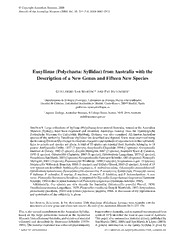
Eusyllinae (Polychaeta: Syllidae) from Australia with the description of a new genus and fifteen new species

ALGOSENSORS 2016 ALGO 2016, Aarhus, Denmark, August 2016

Achtung-Panzer!

Living with an Implanted Cardioverter Defibrillator (ICD)

DTIC ADA521722: Orchestrating Instruments of Power for Nationbuilding
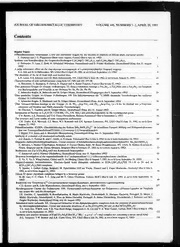
Journal of Organometallic Chemistry 1993: Vol 448 Table of Contents

Learn Human-Computer Interaction: Solve human problems and focus on rapid prototyping and validating solutions through user testing

Clinique du suicide
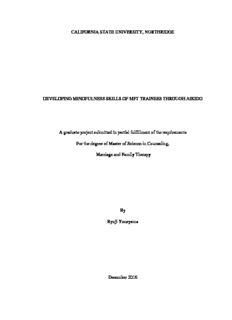
CALIFORNIA STATE UNIVERSITY, NORTHRIDGE DEVELOPING MINDFULNESS SKILLS OF MFT ...
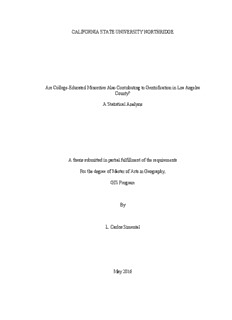
CALIFORNIA STATE UNIVERSITY NORTHRIDGE Are College-Educated Minorities Also ...
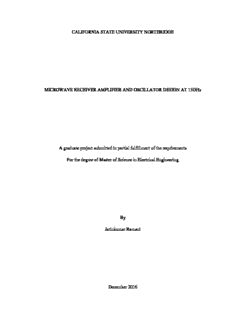
CALIFORNIA STATE UNIVERSITY NORTHRIDGE MICROWAVE RECEIVER AMPLIFIER AND ...

California State Board of Pharmacy
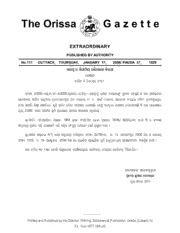
Odisha Gazette, 2007-12-03, No. 111
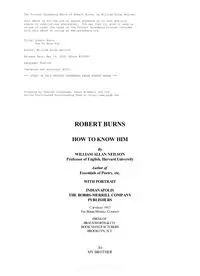
Robert Burns How to Know Him by William Allan Neilson
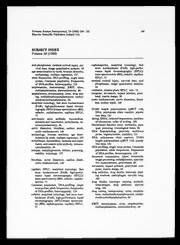
Forensic Science International 1993: Vol 59 Index

La dulce envenenadora



